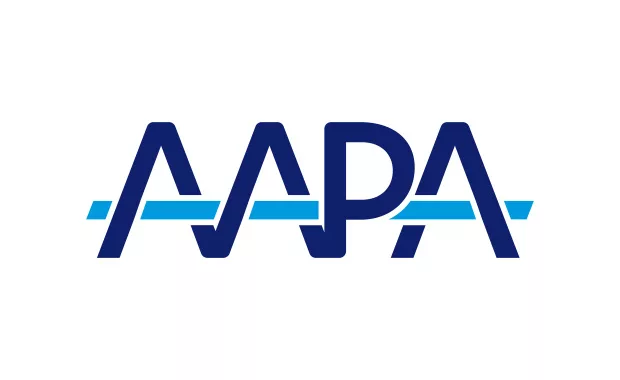Medicare Prescription Payment Plan: Overview for Healthcare Providers
SPONSORED
 The Medicare Prescription Payment Plan is a new, voluntary payment option under Medicare Part D. Beginning on January 1, 2025, this program will allow Medicare beneficiaries to spread their out-of-pocket costs for Part D covered drugs over the calendar year. This program, sometimes referred to as “smoothing,” aims to help patients manage high upfront drug costs.
The Medicare Prescription Payment Plan is a new, voluntary payment option under Medicare Part D. Beginning on January 1, 2025, this program will allow Medicare beneficiaries to spread their out-of-pocket costs for Part D covered drugs over the calendar year. This program, sometimes referred to as “smoothing,” aims to help patients manage high upfront drug costs.
Which patients may benefit from the Medicare Prescription Payment Program?
While the program will be available to all beneficiaries, patients most likely to benefit from the program include those who:
- Had high out-of-pocket costs in the previous year – about $2,000 or more.
- Expect to have high out-of-pocket costs, especially in the early months of the year, which may be associated with complex medical conditions such as cancer, an autoimmune condition, HIV, multiple sclerosis, etc.
Some patients will receive notifications from their plan or pharmacy about the Medicare Prescription Payment Plan, but those notifications may not reach everyone who could benefit. Informing your patients about this program before they receive their prescription from their pharmacy can help prevent delays in treatment.
How can patients elect or “opt in” to the Medicare Prescription Payment Plan?
All beneficiaries can opt into the Medicare Prescription Payment Plan through their Part D or Medicare Advantage plan prior to or at any time during the plan year. Participation is voluntary and patients must opt into the program in order to participate. There are three ways for them to sign up:
- Telephone: Call their Part D or Medicare Advantage plan directly.
- Paper Request: Fill out a paper election request form from their plan.
- Online: Elect this option through their plan’s website.
Note: If a patient opts into the program during the plan year, it may take their Part D or Medicare Advantage plan up to 24 hours to process the election.
How will the program change when and how patients pay their out-of-pocket costs?
If a patient chooses to participate in the Medicare Prescription Payment Plan:
- They will pay $0 for their prescriptions at their pharmacy.
- Out-of-pocket costs for their Part D drugs will be divided into monthly payments based on a standard formula used by all Part D plans, which will adjust depending on the patient’s cost sharing to date and the remaining months in the plan year.
- In addition to their monthly premium (if applicable), patients will be billed each month by their Part D or Medicare Advantage plan for the drug costs they owe.
Important notes:
- Variable payments: A patient’s monthly payments under the program may vary throughout the year depending on the out-of-pocket cost of their medications, their plan benefits, and when they elect into the program.
- Cap on total out-of-pocket costs each year: This program will work with other changes to the Part D benefit beginning in Starting January 1, 2025, Medicare beneficiaries’ out-of-pocket costs for their Part D drugs will be capped (at no more than $2,000 in 2025) each year, even if they do not opt into the Medicare Prescription Payment Plan.
- No additional fees or interest: There are no additional fees or interest associated with the program, even if a patient is delayed in making payments to their plan.
Depending on each patient’s situation, they could see their monthly costs under the Medicare Prescription Payment Plan increase toward the end of the year. However, a beneficiary’s annual out-of-pocket costs will never be higher than they would have been if he or she had not participated in the Medicare Prescription Payment Plan. Patients and their caregivers will need to make individual determinations about whether the Medicare Prescription Payment Plan is right for them. Patients who may not benefit include: (a) patients who receive “Extra Help” from Medicare or qualify for a Medicare Savings Program; (b) patients with other forms of financial assistance, such as State Pharmaceutical Assistance Program (SPAP) or other assisted health coverage; (c) patients who opt in in the last couple of months of the year.
Can patients leave the Medicare Prescription Payment Plan?
Patients can voluntarily choose to end their participation in the Medicare Prescription Payment Plan at any time during the year. Additionally, if a patient misses payments, their Part D plan can involuntarily remove them from the program. However, their Part D drug coverage will continue as long as they continue to pay their plan premiums.
Regardless, if a patient is removed from the program due to missed payments or the patient decides to voluntarily leave the program, they are still responsible for paying their Part D plan any remaining balances owed under the program. There will be no interest or fees for late payments.
How can I support my patients?
- Education: Talk to your Medicare patients about this option, especially when starting patients on new medicines that often have high out-of-pocket costs. You can encourage patients who may benefit from this program to opt into the Medicare Prescription Payment Plan before receiving their prescription from their pharmacy.
- Resources: During Part D open enrollment, starting on October 15, 2024, there will likely be several ways for patients to get more information on the program and how they can elect this option. Resources include:
- Their Part D or Medicare Advantage plan: Patients can visit their plan’s website or call their plan directly.
- Medicare: Medicare.gov/prescription-payment-plan, or call 1-800-MEDICARE (1-800-633-4227), 24 hours a day, 7 days a week. TTY users can call 1-877-486-2048.
- State Health Insurance Program (SHIP): Visit org for local SHIP contact information where patients can get free, personalized health insurance counseling.



